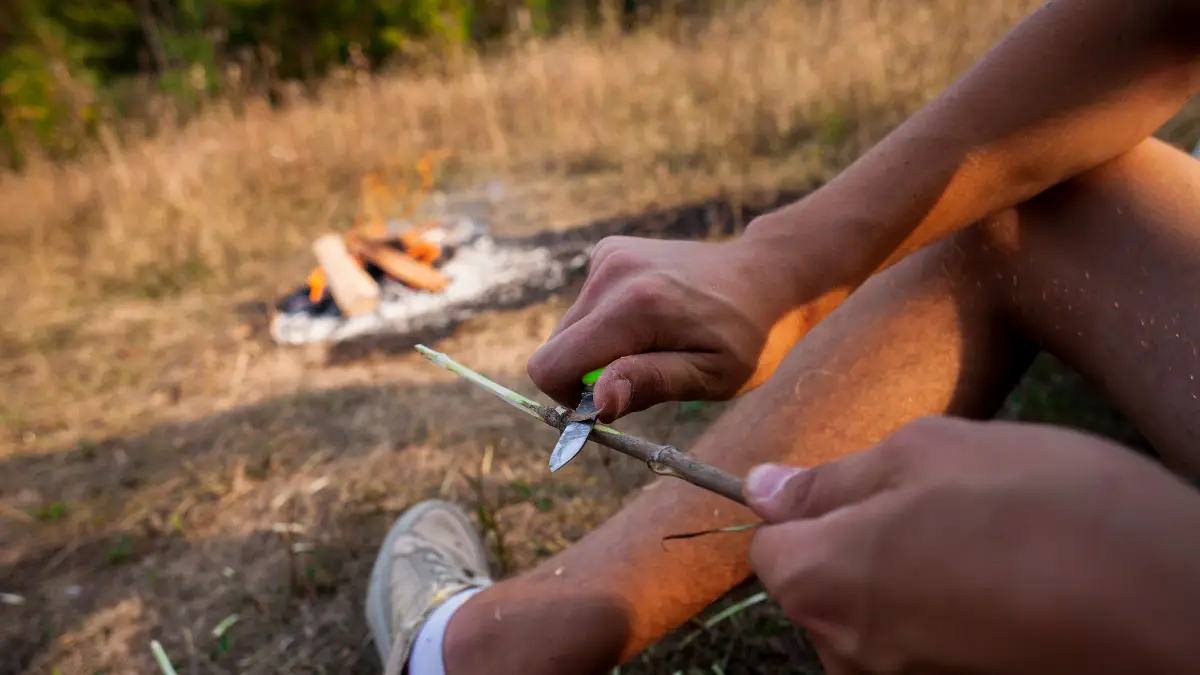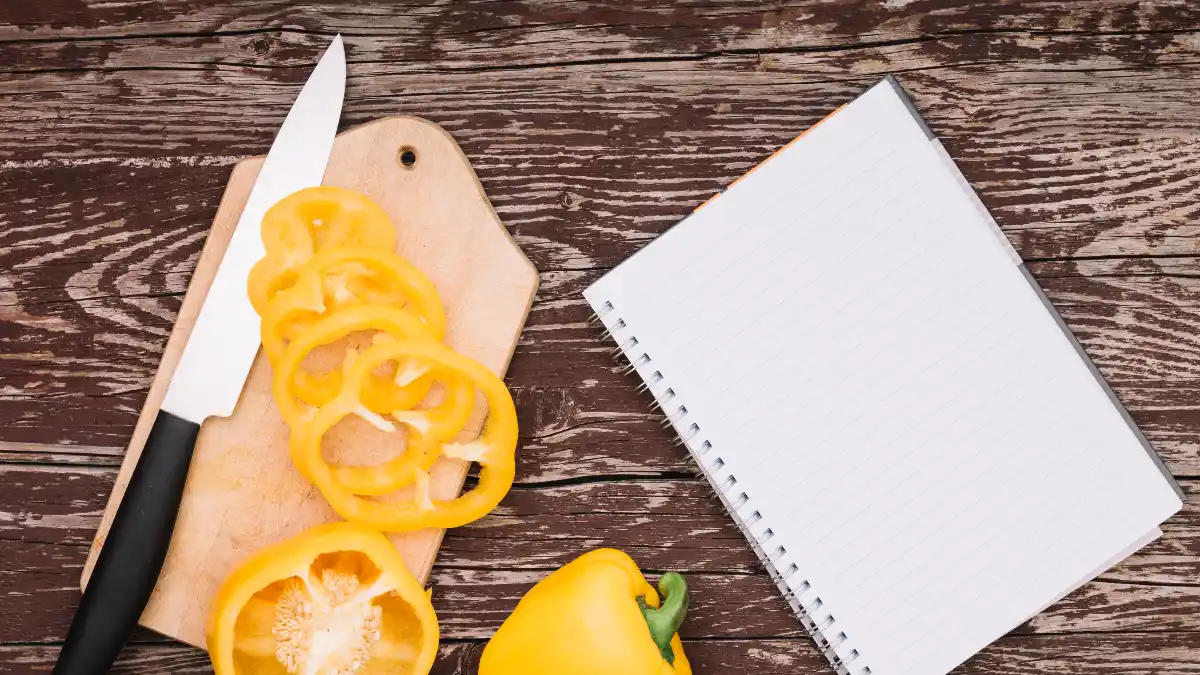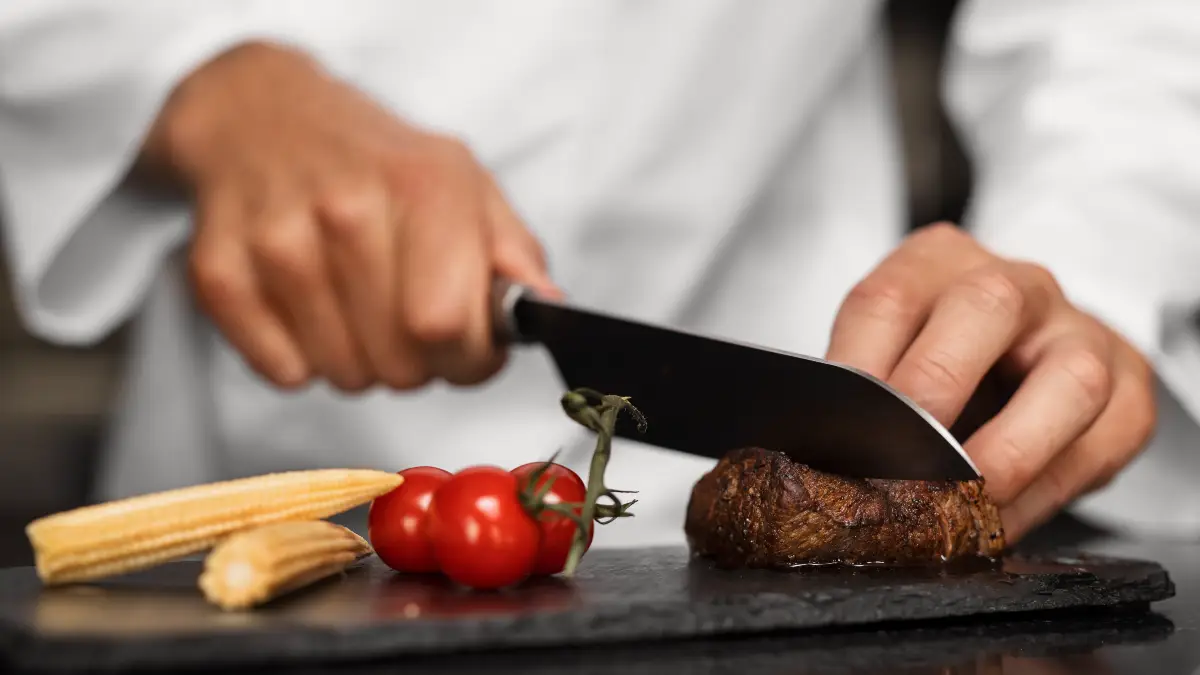Your kitchen holds life-saving defensive tools you’ve never considered. With knife attacks making headlines weekly and 44 mass stabbings documented since 2006, feeling defenseless is natural.
Victims who fight back with improvised weapons have a 92.3% survival rate. That cast iron skillet, rolling pin, or even hot coffee could buy you the seconds needed to escape. This isn’t about becoming a warrior.
It’s about simple, proven tactics that work when running isn’t an option. You’ll learn which kitchen items experts recommend, real cases where they saved lives, and the legal rules you must know.
1. Expert-Recommended Kitchen Defense Tools Ranked

Your cast iron skillet is the no 1 defensive tool security experts recommend. Steve Tarani, who trained CIA protective services teams, calls it the perfect combination of weight and control.
Why? It’s heavy enough to stop an attacker but familiar enough that you already know how to grip it. The handle gives you reach. The weight delivers serious impact. And unlike other options, you can use it as both a shield and a striking tool.
Rolling pins come in second place for good reason. Wilton Valerio, a Filipino martial arts instructor who specializes in impact weapons, points out their natural advantage – you instinctively know how to hold one.
The weight sits at both ends, making every swing count. Solid wood or metal versions work best for improvised weapon effectiveness. Avoid hollow plastic ones that might break on impact.
Now, about kitchen knives – they’re complicated. Bob Campbell from USCCA has spent decades studying defensive cases. He warns that pulling a knife changes everything legally.
Yes, a large chef’s knife can work as a visual deterrent. Courts treat knives as deadly weapons automatically.
The Scottish Centre for Personal Safety puts it bluntly – only use a knife when facing deadly force yourself. Even then, kitchen knife defense legal complications can follow you for years. Think of knives as your absolute last resort, not your first choice.
Your kitchen has other solid options. Meat mallets pack concentrated force in a small package. The textured head can cause serious damage from any angle.
Heavy cutting boards work two ways – block attacks with the flat side or strike with the edge. Both give you household defensive tools that won’t automatically trigger deadly force legal issues.
Hot coffee deserves special mention. Massachusetts courts officially classify it as a “dangerous weapon” in self-defense cases because of burn potential. A face full of boiling water buys you escape time.
Same goes for oven cleaner or other caustic chemicals – temporary blindness gives you seconds to run. But remember, these cause pain without stopping power. Use them to escape, not to fight.
Heavy, familiar items you can grab quickly work best. Cast iron skillet self-defense tops the list because it combines all three advantages. Whatever you choose, practice picking it up quickly. Those first three seconds matter most.
2. Real Cases Where Kitchen Items Saved Lives

In Tewksbury, Massachusetts, a frying pan literally saved a woman’s life. The 2013 case became a textbook example of justified kitchen defense. When Frank Harrison broke in wielding a knife and attempting rape, the victim grabbed her cast iron skillet.
Two solid strikes to his head caused deep lacerations. Harrison needed medical treatment before his arrest on multiple felony charges. The victim? She walked away unharmed, and prosecutors filed zero charges against her.
This frying pan attack defense proved that household items can stop violent crimes. Hot coffee has its own legal standing in Massachusetts courts. Multiple self-defense case studies show victims successfully using heated liquids to escape attackers.
The courts recognize coffee as a “dangerous weapon” when used defensively – not because it’s deadly, but because burns create immediate pain and distraction.
One documented case involved a woman throwing a full pot at an intruder’s face, causing second-degree burns. She escaped while he dealt with the pain. The key? She stopped once she could escape safely.
The 2024 Lindsay, Ontario case shows what happens when things get complicated. Jeremy McDonald heard someone breaking into his home. The intruder, already wanted by police, came at McDonald with a weapon.
McDonald grabbed a kitchen knife and defended himself, causing life-threatening injuries to the attacker.
Even though McDonald was defending his home against an armed criminal, Canadian prosecutors charged him with aggravated assault. These kitchen weapon legal cases remind us that using deadly force, even when justified, can lead to criminal charges.
Virginia and Florida cases from 2023-2024 reveal the pattern for successful defense. Winners in court share three things. First, they faced clear, immediate threats. Second, they stopped using force once the threat ended.
Third, they called 911 immediately and cooperated fully with police. Losers in court? They chased fleeing attackers, continued attacking after threats ended, or tried to hide evidence.
RAND Corporation research backs this up with hard numbers. Their analysis of violent incidents shows 67% of civilian interventions successfully stop or reduce attacks.
Successful defenders used proportional force and focused on escape, not revenge. The justified force examples that hold up in court involve people who defended themselves just enough to get away safely.
Remember this: every prosecutor will scrutinize your actions. Document injuries, save security footage, get witness contacts. Your kitchen items can save your life, but your actions afterward determine whether you face charges.
3. Creating Distance: Your Primary Survival Strategy

Most knife attacks happen at “bad breath distance” – within three feet. That’s why every security expert says the same thing: create space or die trying. Police training data shows the harsh reality.
When officers relied only on their guns in knife simulations, just 7% survived. Why? Because at close range, knives move faster than you can draw and aim. Your first move should always be getting away, not getting a weapon.
Angular movement. Never back straight up when someone charges with a knife. You’ll trip, fall, or get caught. Instead, move at 45-degree angles. This forces attackers to change direction and momentum.
Professional trainers call this disrupting the attacker’s OODA loop – Observe, Orient, Decide, Act. When you move sideways, they have to reset their entire attack plan. Those split seconds of confusion are your knife attack distance tactics for survival.
The 21-foot rule from police academies proves why distance matters. Even trained officers need 21 feet of space to draw and fire before a knife attacker reaches them. You’re not a trained officer.
You need more space. Use furniture, cars, walls – anything that makes the attacker go around instead of straight at you. A kitchen table between you and danger buys precious seconds. Barrier creation survival means thinking in obstacles, not just escape routes.
Angular movement self-defense gets more complex in crowds. When panic hits, people pack together at familiar exits. Densities above 5-7 people per square meter turn deadly fast – that’s when crowd crush starts.
Your strategy changes here. Stay near walls where you can move laterally. Avoid crowd centers where you’ll get trapped. Look for alternative exits like staff doors or windows. Always know two ways out of any space you enter.
Mass incidents in 2024-2025 taught us hard lessons about crowd escape strategies. People who survived shared common behaviors. They moved immediately when they sensed danger, before crowds formed.
They headed for less obvious exits. They stayed low to avoid becoming targets. And critically, they helped others without stopping their own escape – pulling people along rather than stopping to assist.
The math is simple but harsh. Attacks average 23 seconds. Your decision-making time is maybe three seconds. Every foot of distance you create improves your odds. Every barrier you place multiplies those odds.
Distance isn’t just your primary strategy – it’s the difference between becoming a survivor or a statistic.
4. Legal Framework for Kitchen Item Self-Defense

Using kitchen items for defense puts you in a legal minefield that changes by state. The law uses three tests for any defensive force, Was the threat imminent? Was force necessary? Was your response proportional?
Fail any test and you could face criminal charges, even if you were the victim. Understanding these rules before you need them could keep you out of prison.
Start with imminence. You can’t grab that skillet because someone threatened you yesterday or might attack you later. The threat must be happening right now. Necessity means you had no other reasonable option.
If you could have escaped but chose to fight instead, prosecutors will ask why. The proportional force requirement is trickiest – your response must match the threat level. Using a knife against an unarmed attacker usually fails this test.
Stand Your Ground states give you more legal protection. These 30+ states (including Texas, Florida, Georgia, Alabama, Alaska, Arizona, Arkansas, Indiana, Iowa, Kansas, Kentucky, Louisiana, Michigan, Mississippi, Missouri, Montana, Nevada.
New Hampshire, North Carolina, North Dakota, Ohio, Oklahoma, Pennsylvania, South Carolina, South Dakota, Tennessee, Utah, West Virginia, Wisconsin, and Wyoming) don’t require you to retreat before using force. You can defend yourself wherever you have a legal right to be.
But other states follow Duty to Retreat rules. Connecticut, Massachusetts, Minnesota, New York, and Rhode Island require you to try escaping first. Only when escape is impossible can you use force.
The exception? Castle Doctrine protects you in your own home. Every state recognizes your right to defend your home without retreating. That’s why the Lindsay, Ontario case shocked people – even clear home defense led to charges under Canadian law.
Self-defense law 2025 has new developments you should know. Washington State adopted enhanced training standards for public defenders handling these cases.
Courts increasingly scrutinize whether defenders had martial arts or weapons training – it affects the “reasonable person” standard. Your training can work against you if prosecutors argue you should have used less force because you knew better.
Documentation saves defendants. Call 911 immediately – first callers get presumption of innocence. Photograph all injuries, no matter how minor. Get witness names and numbers.
Save any video footage. Write down what happened while it’s fresh. These improvised weapon legal defenses succeed when evidence supports your version. They fail when you wait, letting prosecutors control the narrative.
Even justified self-defense can bankrupt you in legal fees. The average self-defense case costs $50,000 to defend. Some run into hundreds of thousands. That’s why understanding your state’s laws matters. Kitchen items can save your life, but knowing when you can legally use them keeps you free.
5. Professional Training That Makes the Difference

You can’t learn self-defense during an attack – you need training before trouble finds you. C.O.B.R.A. Self-Defense runs 10-week programs they call “Police Academy for Civilians.”
These aren’t martial arts classes with belts and forms. They teach real-world response to knife threats, including legal boundaries and when to run versus fight.
Their focus on knife defense courses includes specific kitchen item deployment scenarios based on actual attacks. R.A.D. Systems offers something unique – 11,000+ certified instructors across North America teaching consistent techniques.
Their women’s programs have campus law enforcement endorsements because they work. The training covers situational awareness techniques using Cooper’s Color Code.
White means unaware and unprepared. Yellow means relaxed but alert. Orange identifies specific threats requiring readiness. Red means fight or flight – immediate action required. Most people live in White. Survivors live in Yellow.
ALICE protocols changed how institutions handle violent threats. The acronym stands for Alert, Lockdown, Inform, Counter, Evacuate – not in that order, but as options.
Moving targets survive more than stationary ones. Their research proves that scattered, moving people are harder to hurt than huddled groups. If you’re in a public space during an attack, ALICE training could save your life.
The USCCA launched 1,600 free courses nationwide for 2025, focusing on legal defensive tool use. These aren’t just fighting classes. They teach threat recognition training – reading body language that precedes violence.
Watch for clenched fists, forward-leaning stance, and thousand-yard stares. Attackers often touch or adjust weapons repeatedly before striking. They position themselves near exits or victims. Learning these patterns gives you crucial extra seconds to react.
Professional training reveals what doesn’t work. Hollywood disarms will get you killed. Fancy spinning kicks fail under stress. Complex joint locks require perfect timing you won’t have.
Instead, instructors emphasize gross motor skills that work when adrenaline floods your system. Strike and move. Create distance. Use simple tools simply. Yell to attract attention and help.
Environmental mapping becomes automatic with practice. Within seconds of entering any space, trained people identify exits, weapons, barriers, and communication tools.
They sit facing doors. They avoid corners where they could get trapped. They keep car keys ready as both escape tools and improvised weapons. This mental preparation means faster response when seconds count.
The best training combines physical techniques with mental preparation and legal education. Knowing how to swing a skillet matters less than knowing when you legally can and psychologically will.
6. Protective Gear That Stops Blades Before They Stop You

Your best defense against a knife isn’t another weapon – it’s armor you already wear. While everyone focuses on fighting back with kitchen tools, security professionals know a different truth.
Modern cut-resistant materials can turn everyday clothing into life-saving protection. The Michigan Walmart attack in July 2025 proved this when several victims survived because thick clothing and work gear reduced blade penetration.
Let’s talk about what actually works. Cut-resistant gloves aren’t just for kitchen prep anymore. Level 5 protection gloves – the same ones butchers wear – can stop a straight blade from penetrating.
They cost about $15-30 and look like regular work gloves. You can wear them while shopping, walking to your car, or working outside without anyone noticing. Unlike carrying a weapon, wearing protective gloves raises zero legal red flags.
Your forearms take most defensive wounds. When you instinctively raise your arms to protect your face and chest, that’s where blades hit first. Construction workers already figured this out.
Cut-resistant arm sleeves designed for handling sheet metal slip on in seconds. They’re lightweight, breathable, and invisible under a jacket. At $20-40 per pair, they’re cheaper than a single emergency room stitch.
The game-changer nobody talks about? Motorcycle gear as daily wear. Those armored hoodies with CE-rated elbow and shoulder protection weren’t designed for knife defense, but they excel at it.
The same impact plates that protect against road rash can deflect or slow blade attacks. Kevlar-lined motorcycle jeans stop abrasion at 70 mph – they’ll absolutely reduce knife penetration.
Wearing protective clothing is 100% legal everywhere, unlike carrying weapons.
Slash-resistant bags deserve special mention. Companies like Pacsafe and XD Design make everyday backpacks with cut-proof straps and panels. In a crowd situation, holding your bag against your chest creates an instant shield.
Security footage from the 2024 London Bridge incident showed multiple people using bags and jackets as barriers, reducing injuries even when struck.
The numbers tell the story. Emergency room data shows that victims wearing multiple layers suffered 60% less severe injuries than those in light clothing. Construction workers and delivery drivers – who often wear cut-resistant gear for work – show significantly lower injury severity when attacked.
It’s not about being paranoid. It’s about stacking the odds in your favor with gear that serves double duty.
Why Defensive Armor Beats Offensive Weapons Every Time
Using protective gear instead of weapons solves your biggest problem the law. When you defend yourself with a weapon – even a kitchen knife in your own home – prosecutors scrutinize every action.
Did you use excessive force? Could you have retreated? Was your response proportional? But wearing protective clothing? That’s just being prepared. No court has ever prosecuted someone for wearing cut-resistant gloves.
Think about the psychology of an attack. Aggressors expect victims to panic, freeze, or flee. They don’t expect resistance, and they definitely don’t expect their blade to fail.
When a knife doesn’t cut through protective gear on the first strike, attackers often hesitate or retreat. That confusion buys you critical seconds to escape. Security camera footage from retail attacks consistently shows attackers abandoning assaults when initial strikes fail to cause expected damage.
The practicality factor changes everything. You can’t carry a cast iron skillet to work. You definitely can’t bring kitchen knives on public transit. But cut-resistant gear? It’s just clothing.
Wear those gloves while gardening. Keep arm sleeves in your work bag. Throw on that armored hoodie for your evening jog. You’re protected without looking paranoid or aggressive.
Cost-effectiveness makes this accessible to everyone. A basic protective setup – gloves, arm sleeves, and a slash-resistant bag – costs under $100 total. Compare that to legal fees starting at $50,000 for a self-defense case, even when you’re justified.
Or consider that the average knife wound requires $20,000 in medical treatment. Protective gear pays for itself by preventing just one injury.
Most knife fatalities come from blood loss, not the initial wound. Protective gear doesn’t need to stop every attack – it needs to reduce penetration depth. The difference between a deep puncture and a surface cut is measured in millimeters but translates to survival.
Modern cut-resistant materials like Dyneema and Kevlar consistently reduce blade penetration by 70-90% in testing.
The real-world validation is compelling. European police units switched to stab-resistant vests after London attacks.
Japanese schools introduced cut-resistant uniforms following incidents there. Amazon warehouses now offer cut-resistant gear to all employees. These institutions ran the numbers and reached the same conclusion: protection beats reaction.
Building Your Everyday Armor System
Start with your hands because that’s where defense begins. Level 5 cut-resistant gloves should be your first purchase. Look for ANSI/ISEA ratings on the label – Level 5 means maximum cut protection.
Brands like DEX FIT and MaxiFlex make gloves thin enough for phone use but tough enough to grab a blade. Keep pairs in your car, work bag, and home. At $15 each, there’s no excuse not to have them everywhere.
Your torso needs the most protection but also the most discretion. Slash-resistant clothing has evolved beyond bulky vests. Bladerunner makes t-shirts with Kevlar panels that look completely normal.
Hackshield offers hoodies with built-in cut protection around vital areas. For maximum protection without looking tactical, layer a cut-resistant shirt under a motorcycle hoodie with armor inserts.
Don’t forget your lower body. Most people protect their upper body then leave legs vulnerable. Motorcycle jeans with Kevlar lining provide excellent slash resistance while looking like regular denim. Draggin Jeans and Bull-it Jeans lead this market.
For work environments, Carhartt makes double-front pants that, while not specifically cut-resistant, provide significant protection through sheer thickness and durability.
Accessories complete your system without adding bulk. A leather belt becomes a defensive tool and barrier. Steel-toed boots protect feet and deliver stopping power if needed.
A simple scarf can protect your neck – the most vulnerable area. Even a thick watch can deflect wrist cuts. Each item serves normal purposes while adding protective layers.
The key is integration, not militarization. You’re not building a suit of armor. You’re selecting everyday items that happen to offer protection. That motorcycle jacket you wear for style? It’s also armored.
Those work gloves for yard work? They’re cut-resistant. The messenger bag for your laptop? It has slash-proof straps. Every choice adds protection without announcing it.
Storage and accessibility matter too. Keep protective gear where you’ll actually use it. Gloves in your car’s door pocket, not the trunk.
Arm sleeves in your desk drawer at work. A protective jacket on your office chair, not in a closet. The best protection is what you’re wearing when trouble finds you, not what’s sitting at home.
This isn’t about living in fear. It’s about practical preparation that costs less than your monthly coffee budget. Every piece serves daily purposes while providing emergency protection.
You’ll probably never need the defensive features. But if you do, you’ll be grateful for every layer between you and danger.


